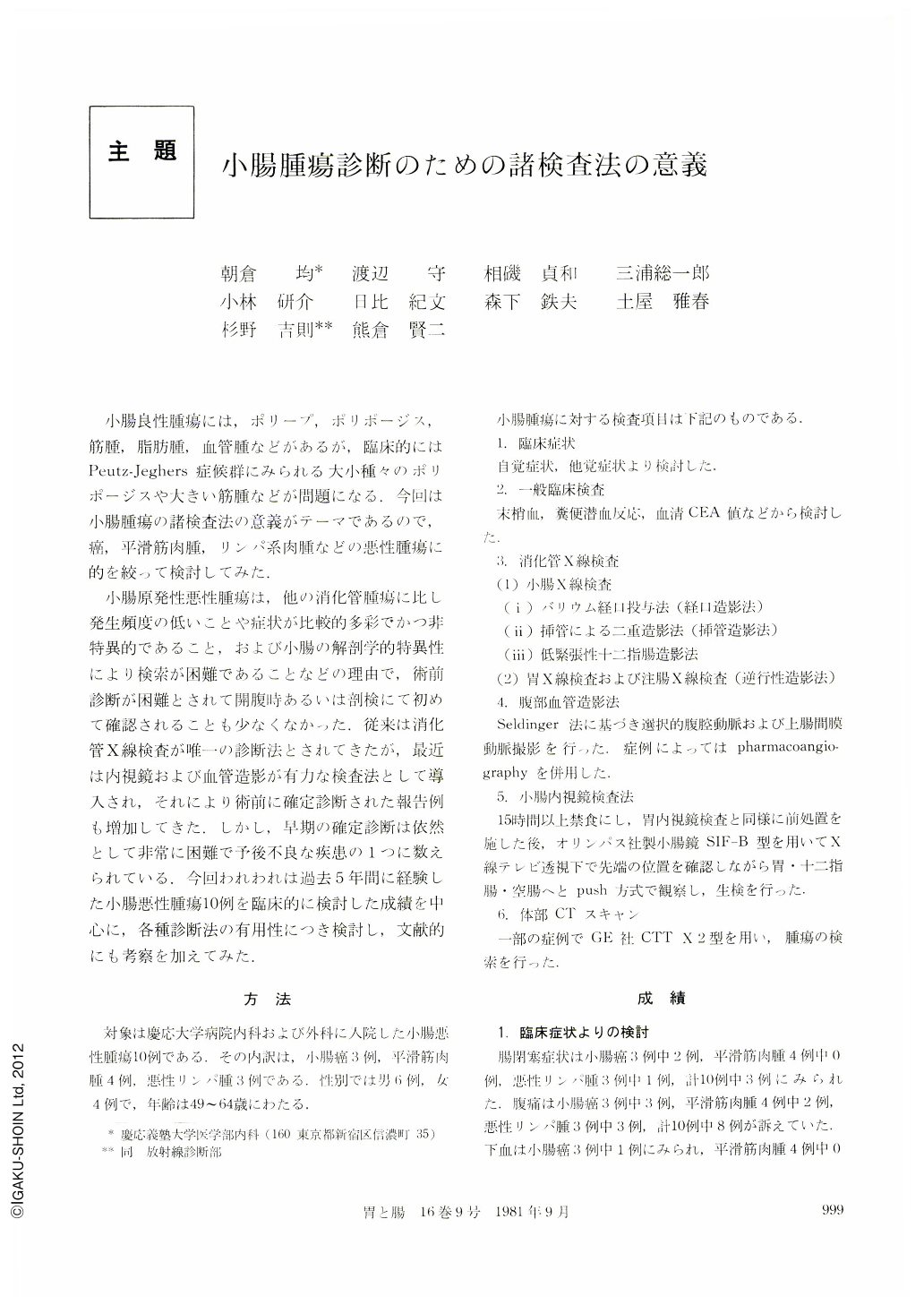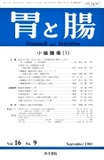Japanese
English
- 有料閲覧
- Abstract 文献概要
- 1ページ目 Look Inside
小腸良性腫瘍には,ポリープ,ポリポージス,筋腫,脂肪腫,血管腫などがあるが,臨床的にはPeutz-Jeghers症候群にみられる大小種々のポリポージスや大きい筋腫などが問題になる.今回は小腸腫瘍の諸検査法の意義がテーマであるので,癌,平滑筋肉腫,リンパ系肉腫などの悪性腫瘍に的を絞って検討してみた.
小腸原発性悪性腫瘍は,他の消化管腫瘍に比し発生頻度の低いことや症状が比較的多彩でかつ非特異的であること,および小腸の解剖学的特異性により検索が困難であることなどの理由で,術前診断が困難とされて開腹時あるいは剖検にて初めて確認されることも少なくなかった.従来は消化管X線検査が唯一の診断法とされてきたが,最近は内視鏡および血管造影が有力な検査法として導入され,それにより術前に確定診断された報告例も増加してきた.しかし,早期の確定診断は依然として非常に困難で予後不良な疾患の1つに数えられている.今回われわれは過去5年間に経験した小腸悪性腫瘍10例を臨床的に検討した成績を中心に,各種診断法の有用性につき検討し,文献的にも考察を加えてみた.
In order to clarify the usefulness of various diagnostic procedures of malignant tumors of the small intestine, ten cases were assessed of which three were primary cancer, four were leiomyosarcoma, and three were malignant lymphoma. The results were as follows;
(1) There were no characteristic clinical manifestations to malignant tumors of the small intestine. Chief complaints were signs of obstruction in three cases, abdominal pain in eight cases, melena in one and palpable abdominal mass in three.
(2) Laboratory studies demonstrated mild iron deficiency anemia and persistent positive occult blood reaction for stool in all of the cases. Significantly raised high serum CEA levels were found in a patient with primary small intestinal cancer.
(3) Among various ways of x-ray examinations of the digestive tract, the most useful method for diagnosis was the double contrast x-ray by duodenal intubation. Although characteristic x-ray appearances were seen in cancer, leiomyosarcoma or malignant lymphoma, differential diagnosis was difficult in some cases when studied by x-ray examination only because of their similarity in appearances.
(4) Small intestinal fiberscopy and forceps biopsy were the most reliable diagnostic methods although there were problems such as difficulty of insertion and appropriate pathological examinations.
(5) Abdominal angiogram was a relatively valuable method in diagnosing the neoplasms of the small intestine compared with those of the other GI tract The cardinal angiographic manifestations were many irregular tumor vessels and hypervascularity in leiomyosarcoma. On the contrary, those manifestations were rare in cancer. Angiography was valuable to assess the degree of extent and invasion of tumor as well as to ascertain whether and where the tumor was present.
(6) Body CT scanning was a useful procedure in demonstrating diffuse thickening of bowel-wall, extrinsic involvement and intraluminal mass, especially in the case of extracanal growth of leiomyosarcoma.
In conclusion, it is necessary to make a systematical use of the various means of examinations for diagnesis of the malignant tumors of the small intestine.

Copyright © 1981, Igaku-Shoin Ltd. All rights reserved.


